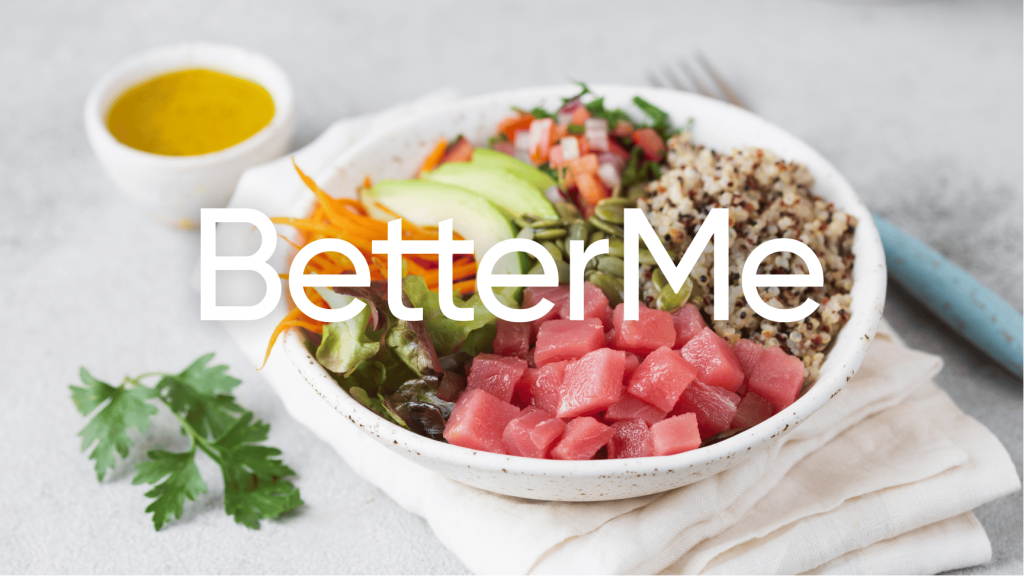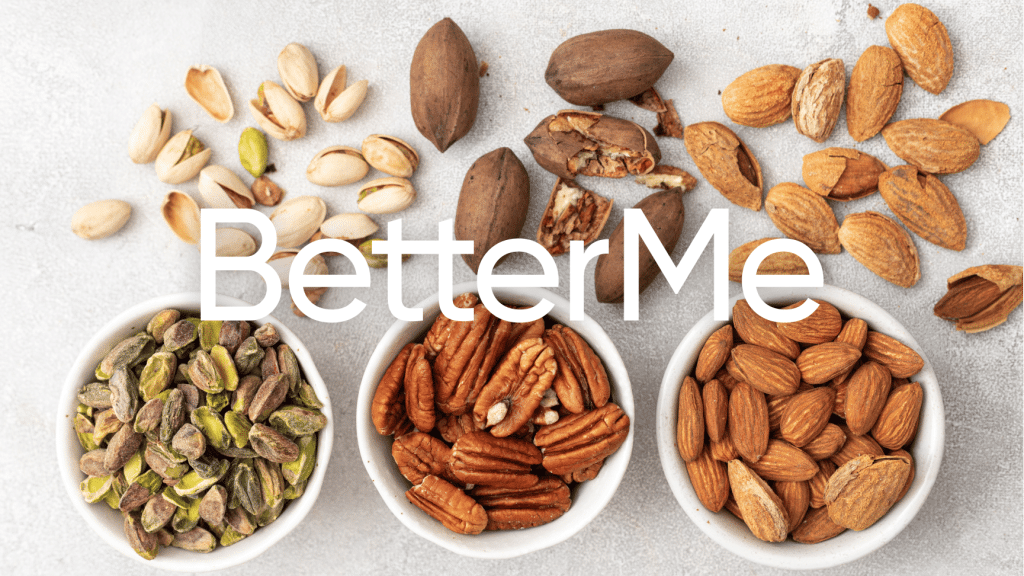If you’ve heard the phrase “foods of the rainbow” before, you might be wondering what it means. The phrase is actually referring to eating a variety of colorful fruits and vegetables.
Get your personalized
meal plan!
It’s no secret that eating plenty of fruits and vegetables is good for your health. In fact, the U.S. Department of Agriculture (USDA) recommends that adults eat at least 2 cups of fruit and 2-1/2 cups of vegetables per day (2).
But what you might not know is that the benefits of eating fruits and vegetables go beyond just general good health.
Studies have shown that people who eat a diet rich in fruits and vegetables may be at lower risk for developing chronic diseases such as heart disease, cancer, stroke, and type 2 diabetes (6).
In this article, we’ll explore the benefits of eating a rainbow of fruits and vegetables. We’ll also provide some tips on how you can add more color to your diet.
What Does It Mean To Eat The Rainbow When Referring To The Food Plate?
Also referred to as the “rainbow diet”, eating the rainbow is a term used to describe consuming foods from each color of the natural spectrum.
The colors of fruits and vegetables indicate clues about their nutrient profiles, so by filling your plate with a variety of hues you’re ensured to get a good mix of vitamins, minerals, antioxidants, and phytochemicals.
Here are examples of 7 colors of the rainbow foods:
- Red fruits – watermelon, tomatoes, strawberries
- Orange fruits – oranges, apricots, mangoes
- Yellow fruits – lemons, bananas, papayas
- Green vegetables – broccoli, Brussels sprouts, kale
- Blue foods – blueberries, blackberries
- Purple foods – grapes, eggplant
- White fruits and vegetables – onions, cauliflower, garlic
The United States Department of Agriculture (USDA) recommends filling half of your plate with fruits and vegetables at every meal (6). If you’re aiming to eat the rainbow, that would mean consuming a variety of colors at each meal or throughout the day.
Read More: Endomorph Female Diet: What To Eat To Lose Excess Pounds And Build Muscle
Why Is It Important To Eat A Rainbow Foods?
There are several benefits of eating colorful fruits and vegetables:
They Are Rich In Phytonutrients
Phytonutrients are the naturally occurring chemicals in plants that are responsible for their color.
These nutrients provide health benefits by protecting the plant from pests, disease and damage from UV rays. They can also help protect our cells from damage, reduce inflammation and protect us from chronic disease (7).
Some of the most potent phytonutrients include (7):
- Anthocyanins (found in blueberries, blackberries, cherries and red grapes)
- Carotenoids (found in carrots, sweet potatoes, squash and leafy greens)
- Flavonoids (found in citrus fruits, cruciferous vegetables and tea)
- Lycopene (found in tomatoes, pink grapefruit and watermelon)
- Phytosterols (found in nuts, seeds, legumes and whole grains)
While all fruits and vegetables contain some phytonutrients, those with the most vibrant colors tend to be the most nutrient-dense. This is because the pigments that give plants their color are also packed with health-promoting antioxidants and other compounds.
They May Help Reduce The Risk Of Chronic Diseases
Because they’re rich in vitamins, minerals, antioxidants and other phytonutrients, eating a diet rich in fruits and vegetables has been linked with a reduced risk of chronic diseases (1).
For example, studies have shown that consuming more carotenoids is associated with a lower risk of developing cancer, while eating flavonoid-rich foods is linked with better learning, memory, and mood (1).
Additionally, consuming lycopene-rich foods is believed to lower the risk of prostate cancer, while eating cruciferous vegetables (such as broccoli and Brussels sprouts) is linked with a reduced risk of colorectal cancer (1).
Eating a diet rich in fruits and vegetables is also associated with a lower risk of stroke, type 2 diabetes and other chronic diseases (6).
If you’re looking to reduce your risk of developing a chronic disease, aim to fill half of your plate with colorful fruits and vegetables at every meal (6).
If you wish to free yourself from all the extra pounds that have been weighting you down for way too long, start using the BetterMe app and overhaul your entire life!
They May Help Support Your Immune System
Your immune system is responsible for protecting your body against infections and diseases. Consuming a diet rich in fruits and vegetables is one of the best ways to support your immune system (6).
This is because they’re packed with vitamins, minerals and antioxidants that help keep your cells healthy and improve their function (6).
For example, vitamin C is a powerful antioxidant that helps reduce cell damage and supports immunity, while vitamin E is another antioxidant that helps protect cells from damage (6).
Additionally, zinc is a mineral that’s essential for immune function, and copper also helps support the function of immune cells (8).
They’re Good For Your Gut
One of the factors that influence the health of your gut is the diversity of the microbes that live there. These microbes play an important role in digesting food, producing vitamins and protecting against harmful bacteria.
Studies have shown that a diet rich in fruits and vegetables is associated with a more diverse gut microbiome. This is thought to be due to the fact that fruits and vegetables contain fiber and other nutrients that support gut health (6).
Additionally, eating a diet rich in colorful fruits and vegetables has been linked to a reduced risk of gastrointestinal diseases, such as inflammatory bowel disease (IBD) and colorectal cancer.
Fruits and vegetables with soluble fiber, such as oranges, apples and carrots, are particularly good for gut health. This is because soluble fiber is fermented in the gut by friendly bacteria and produces short-chain fatty acids (SCFAs), which can then be used by human gut cells for energy (5).
Those with insoluble fiber, such as leafy greens and beans, are also beneficial for gut health. This is because they help add bulk to stool and promote regular bowel movements (5).
They May Help You Lose Weight
If you’re looking to lose weight, fill your plate with colorful fruits and vegetables. This is because they’re low in calories and packed with fiber, which is a nutrient that helps promote satiety (4).
Additionally, studies have shown that eating a diet rich in fruits and vegetables is associated with a lower risk of obesity (1).
They May Help Reduce Inflammation
Inflammation is a process that helps protect your body against infection and disease. However, chronic inflammation is associated with a number of health problems, such as heart disease, type 2 diabetes and some cancers (7).
Eating a diet rich in colorful fruits and vegetables is one of the best ways to reduce inflammation. This is because they’re packed with antioxidants and other nutrients that help fight inflammation.
For example, vitamins C and E are powerful antioxidants that help reduce cell damage and inflammation. Additionally, carotenoids, such as beta-carotene and lycopene, are also known for their anti-inflammatory properties.
They’re Also Good For Your Skin
The nutrients in fruits and vegetables also benefit your skin. For example, vitamin C is essential for collagen production and helps protect your skin against damage from ultraviolet (UV) rays (3).
Additionally, vitamin A is important for skin health and may help keep your skin looking youthful. Antioxidants, such as flavonoids and carotenoids, can also be beneficial for skin health (3).
Read More: 1000 Calorie Diet Menu Plan 7 Days: Dos And Don’ts
How Do You Eat A Rainbow A Day?
One of the best ways to consume a variety of colorful fruits and vegetables is to eat a rainbow a day. This means filling your plate with foods that are red, orange, yellow, green, blue, purple and white.
Here are some meal ideas for breakfast, lunch, snacktime, and dinner based on the rainbow diet:
Rainbow Diet Breakfast Options
- Egg omelet with bell peppers, onions, and spinach
- Oatmeal with blueberries, raspberries, and almonds
- Smoothie made with mangoes, oranges, and bananas
Rainbow Diet Lunch Options
- Grilled chicken salad with tomatoes, carrots, and red onion
- Tuna sandwich on whole wheat bread with lettuce, tomato, and cucumber
- White bean and kale soup
Rainbow Diet Snacktime Options
- Red grapes and cheddar cheese
- Apple slices with peanut butter
- Carrot sticks and hummus
Rainbow Diet Dinner Options
- Grilled salmon with asparagus and roasted sweet potatoes
- Chicken stir fry with peppers, onions, and broccoli
- Vegetarian chili with corn, kidney beans, and tomatoes
Yanking yourself back in shape has never been so easy with our game-changing fitness app! Start transforming your life with BetterMe!
The Bottom Line
Adding a variety of colorful fruits and vegetables to your diet is easy and delicious! Not only do they provide numerous health benefits, but they also add beauty and flavor to your meals. So start filling your plate with the colors of the rainbow today to reap the benefits of a healthy diet!
DISCLAIMER:
This article is intended for general informational purposes only and does not serve to address individual circumstances. It is not a substitute for professional advice or help and should not be relied on for making any kind of decision-making. Any action taken as a direct or indirect result of the information in this article is entirely at your own risk and is your sole responsibility.
BetterMe, its content staff, and its medical advisors accept no responsibility for inaccuracies, errors, misstatements, inconsistencies, or omissions and specifically disclaim any liability, loss or risk, personal, professional or otherwise, which may be incurred as a consequence, directly or indirectly, of the use and/or application of any content.
You should always seek the advice of your physician or other qualified health provider with any questions you may have regarding a medical condition or your specific situation. Never disregard professional medical advice or delay seeking it because of BetterMe content. If you suspect or think you may have a medical emergency, call your doctor.
SOURCES:
- A Review of the Science of Colorful, Plant-Based Food and Practical Strategies for “Eating the Rainbow” (2019, nih.gov)
- Americans Still Can Meet Fruit and Vegetable Dietary Guidelines for $2.10-$2.60 per Day (2019, usda.gov)
- An Oral Supplement and the Nutrition–Skin Connection (2019, nih.gov)
- Dietary fiber and obesity (1978, pubmed.gov)
- Dietary fiber and prebiotics and the gastrointestinal microbiota (2017, nih.gov)
- Health Benefits of Fruits and Vegetables1 (2012, nih.gov)
- Phytonutrients: Paint your plate with the colors of the rainbow (2019, harvard.edu)
- Zinc and immune function: the biological basis of altered resistance to infection (1998, pubmed.gov)











